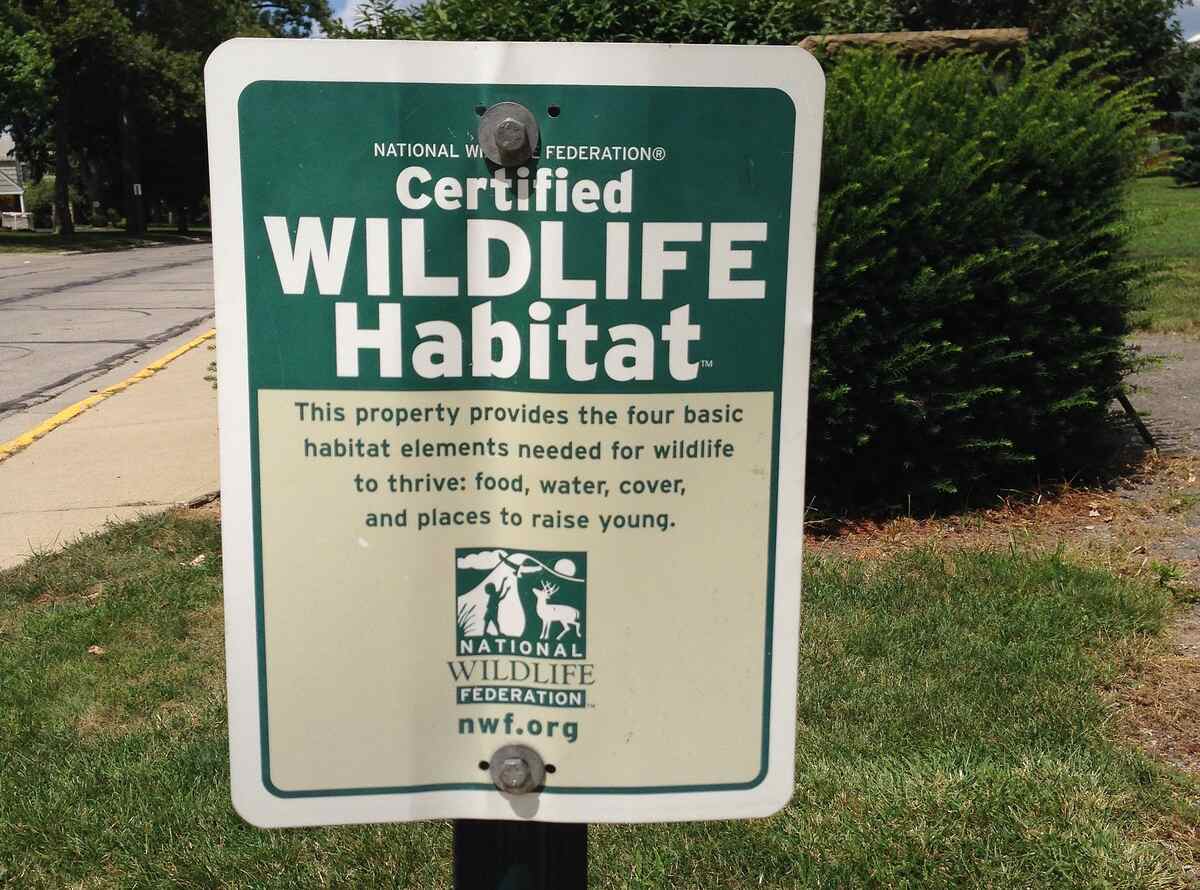
Small creatures are struggling with a big issue: Birds, bees, butterflies, frogs, and rabbits are among the wildlife facing homelessness, evicted from their environments as a result of habitat loss and degradation. You can help these backyard creatures by turning your yard into a Certified Wildlife HabitatⓇ in five steps.
What is a Certified Wildlife Habitat?
A certified wildlife habitat provides food, resources, and shelter for the animals and insects that live in your area. By turning your yard into a safe haven, with food options, water, and nurseries for the local wildlife, you can help in conservation efforts that protect creatures and the planet.
Certification Program Requirements
Most programs have five specific requirements.
1. Build a Pollen, Nectar, Fruit, and Seed Buffet
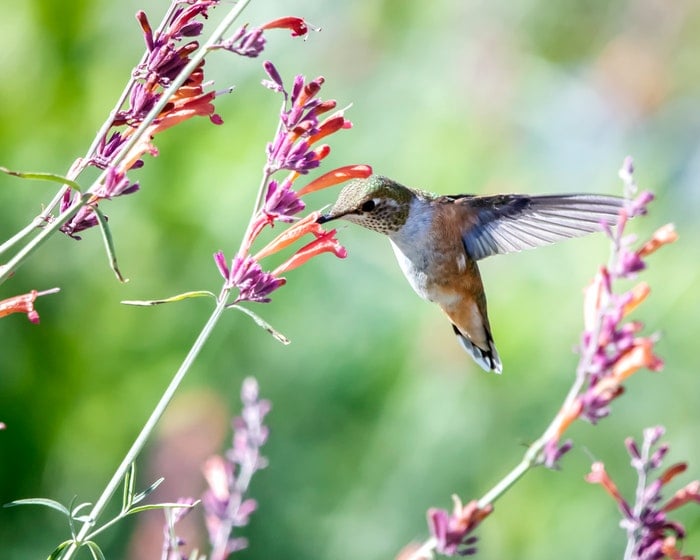
Photo Credit: Frank Cone / Pexels
Native plants, which are indigenous to a specific geographic area and have evolved to thrive in local conditions, provide the best sources of pollen, fruit, and seeds for wildlife. Both Monarch Watch and the North American Butterfly Association (NABA) certify gardens that provide native nectar sources and host plants.
The best plants for your garden depend on where you live:
- Northwest: Serviceberry, Russian sage, Pacific rhododendrons
- Southeast: Wild columbine, coral honeysuckle, and scarlet bee balm
- Northeast: New England aster, fringetree
- Midwest: Goldenrod, sunflower
Providing appropriate sources of food is important. David Mizejewski, a naturalist with the National Wildlife Federation (NWF), notes that some birds won’t eat berries from exotic plants, and butterflies and moths rely on native host plants for both food and nesting sites.
Bird feeders can be a component of a wildlife garden but Mizejewski warns, “Bird feeders are only a supplement to habitat; you should plant the plants that wildlife need to survive.” Your garden needs three different kinds of food sources, such as seeds, berries, nectar plants, suet, or bird feeders to qualify as a Certified Wildlife Habitat.
2. Supply Shelter
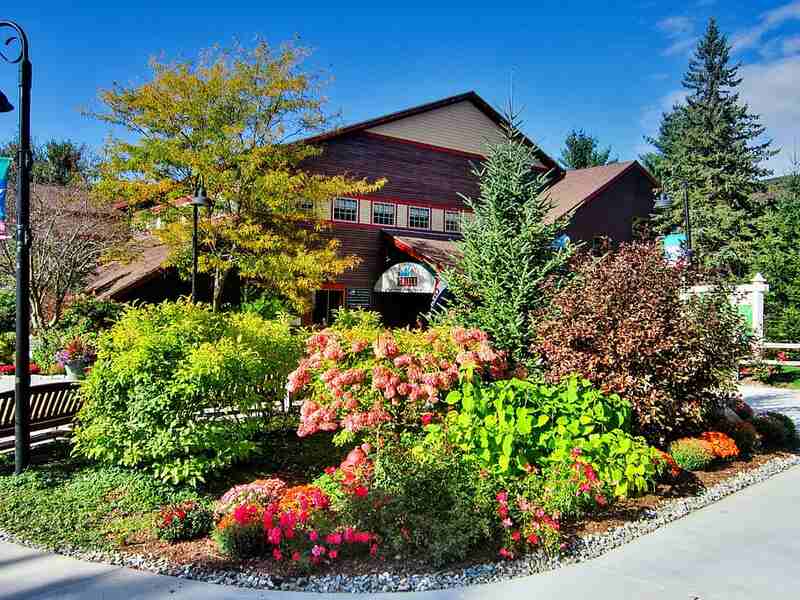
Wildlife need safe spaces to hide from predators or seek shelter from the elements. The following are important components of a backyard wildlife habitat:
- Mature trees
- Shrubs
- Thickets
- Rock piles
- Burrows
- Ponds
- Brush piles
Man-made birdhouses and other nesting boxes can also add to the shelter. Adding at least two sources of shelter to the garden will help you earn habitat certification. The Audubon Society asks gardeners to keep domestic cats indoors to protect birds in the garden.
“Plants will provide most of the shelter needed in your garden,” Mizejewski says. “Instead of planting one tree or bush, mimic Mother Nature and plant an entire shrub row; dense plantings provide more cover and places for wildlife to hide.”
Consider adding roosting boxes, birdhouses, butterfly boxes, beneficial bug hotels, and toad abodes, which provide shelter while adding decorative features to the garden.
3. Offer a Drink
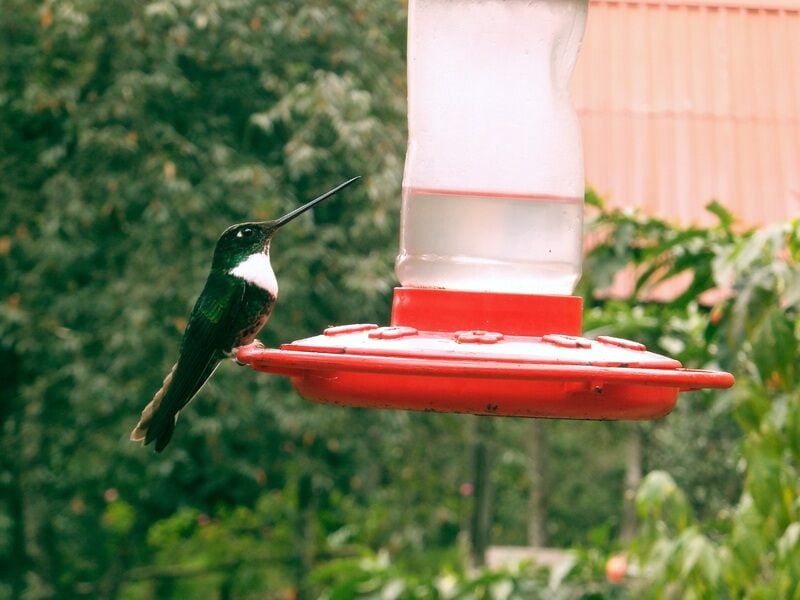
A clean source of drinking water is essential to support wildlife, but the H2O in a wildlife habitat is for more than sipping. Birds use shallow water for bathing while butterflies absorb nutrients from the soil/water combination found in natural puddles. Don’t have a pond or wetland in the backyard? Fountains and birdbaths also qualify as acceptable water sources, notes Mizejewski.
“If you place the bowl of the birdbath on the ground instead of on a pedestal, turtles and rabbits will be able to get a drink, too,” he adds. You’ll need at least one source of water to earn certification.
4. Provide Natural Nurseries
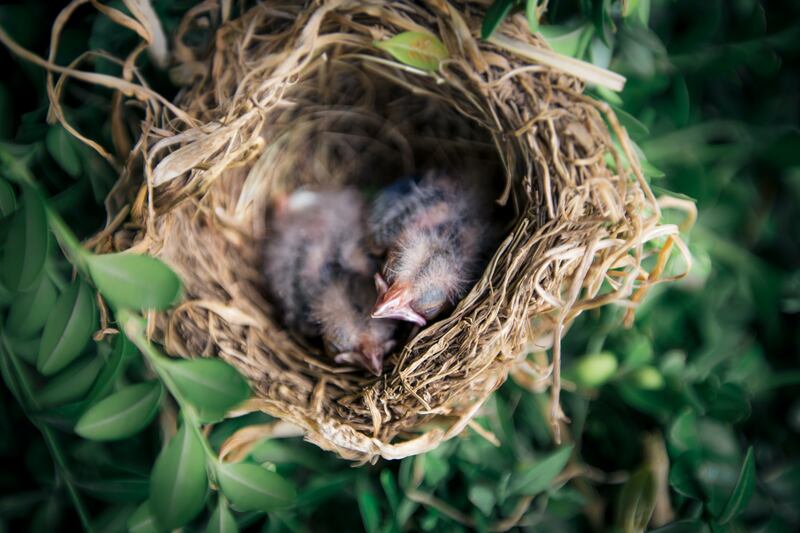
If you want to help boost the wildlife population, you need to provide a place for creatures to raise their young.
- Birds nest in trees
- Snakes create burrows under rock piles
- Frogs lay eggs on plants near water sources
Giving wildlife at least two places to raise their young counts toward certification.
If dead trees don’t pose a hazard, Mizejewski suggests leaving them in the landscape, explaining, “Woodpeckers will excavate cavities that provide shelter for insects, and 96 percent of backyard birds feed insects to their young.”
5. Sustainable Gardening Practices
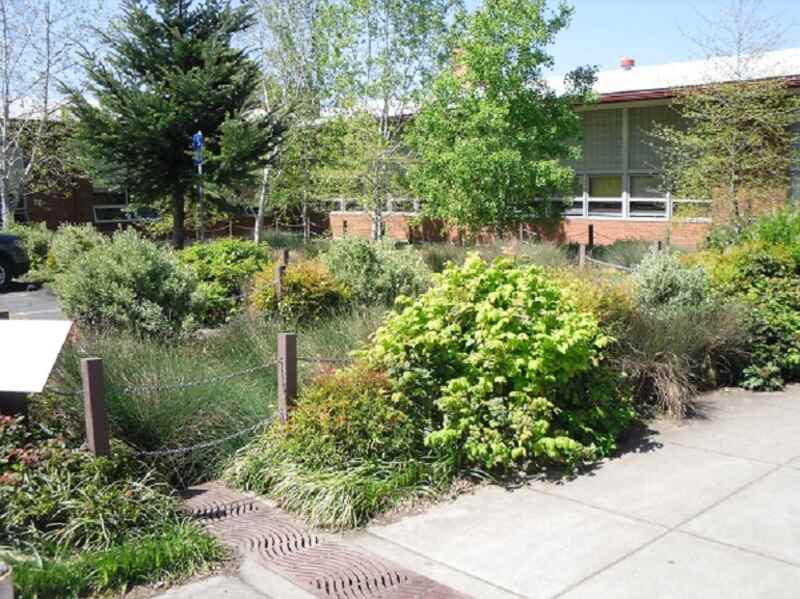
“None of these efforts will matter if you’re dousing the yard with chemicals,” Mizejewski says.
To keep the landscape healthy for wildlife, you must use at least two sustainable practices to earn NWF certification, including:
- Eliminating chemical pesticides and fertilizers that could harm or kill vulnerable creatures
- Removing non-native plants and animals
- Installing a rain garden or using drip hoses or soaker irrigation to reduce water use
Why Have a Certified Wildlife Habitat?
Due to development, infrastructure, and agriculture, millions of acres of wildlife habitat have been wiped out. More than 290 million acres of grasslands — an amount of land equivalent to 130 Yellowstone National Parks — have been converted to cropland. The World Wildlife Federation calls habitat loss “the greatest threat to species.”
Your garden could help come to the rescue. “The best way to help wildlife is to restore the natural environment,” explains Mizejewski.
Habitat certifications
To encourage gardeners to prioritize landscape features that provide wildlife a backyard habitat, nonprofits including NWF, Audubon Society, Monarch Watch, and NABA have established certification programs (for details, see chart “Lawn Certification Programs at a Glance“).
They offer instructions on how to garden for wildlife, including birds and pollinators like bees and butterflies. Those who encourage native species to take up residence in their greenspaces can earn this certification. NWF has certified more than 230,000 wildlife-friendly habitats since its Certified Wildlife Habitat program was introduced in 1973.
Certification Costs and Processes
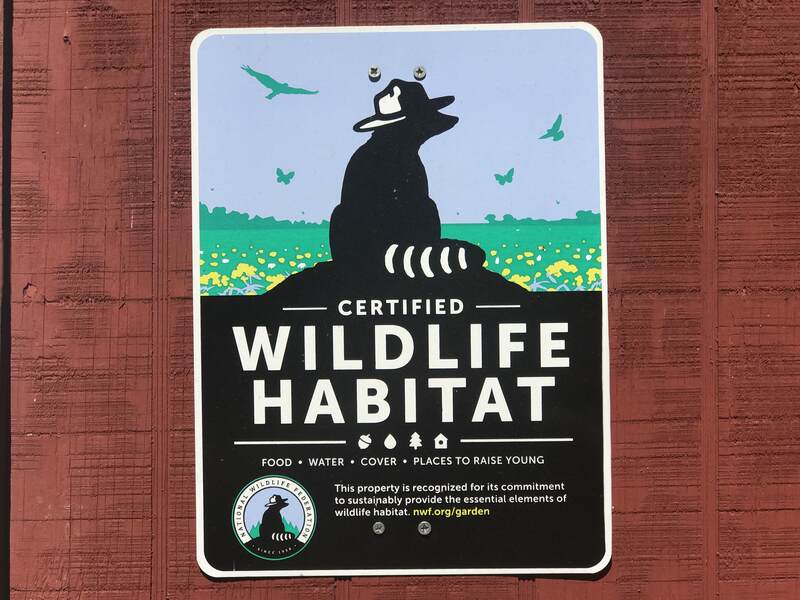
The cost and process for certification vary between organizations. NWF charges a $20 application fee, Monarch Watch charges $16, and the application at NABA is $15. Certification is awarded on the honor system. Each chapter of the Audubon Society sets its own rates for certification. All charge additional fees for yard signs.
In addition to providing wildlife a place to call home, pursuing certification has broader benefits. “The program helps wildlife, but it also helps connect people to nature,” explains Mizejewski. “Hanging a sign in their garden helps promote the message and build awareness about the importance of wildlife habitat.”
| Lawn Certification Programs at a Glance | |
|---|---|
| Organization and Program | National Wildlife Federation Certified Wildlife Habitat |
| Requirements | Food, water, cover, places to raise young, sustainable gardening practices |
| Application Process | Online application, honor system |
| Cost | $20 application fee; garden signs starting at $30 |
| Organization and Program | Audubon Society Wildlife Sanctuary Program |
| Requirements | Food, water, shelter. No national program; some local chapters operate their own programs with unique requirements, which can include minimum square footage, removal of invasive plants and keeping domestic cats indoors. |
| Application Process | Varies by local chapter; some have online application and schedule a site visit with a volunteer certifier. |
| Cost | Must be a current Audubon Society member + pay a fee that varies depending on property size. Local chapters set their own rates. |
| Organization and Program | MonarchWatch Monarch Waystation Program |
| Requirements | Minimum 100 square foot garden in sunny location; shelter, nectar plans, milkweed, regular garden maintenance, including eliminating insecticides and removing invasive species. |
| Application Process | Online application fee, honor system |
| Cost | $16 application fee ($33 for application and garden sign). |
| Organization and Program | North American Butterfly Association Certified Monarch Garden |
| Requirements | Native caterpillar food plants, native nectar sources, minimize pesticide use. |
| Application Process | Online application, honor system |
| Cost | $15 application fee, $25 for garden sign. |
FAQ About Certified Wildlife Habitats
The best way to attract birds to your garden is by having readily available food, water, and shelter. There are a few different things you can add to your garden that birds love:
• Bird feeders
• Birdbaths
• Ponds
• Trees for nests
• Greenery for nesting material
• Bird boxes
• Bright flowers: orange, blue, yellow, and red
Birds are great to keep around in your yard, not only because they are pollinators but also because they offer free pest control. They’ll eat mosquitoes, beetles, and other creepy crawlies that inhabit your yard.
A Certified Wildlife Habitat involves more than just pollinators and furry animals. Amphibians are also part of what makes up the diversity in your backyard. These include frogs, toads, and salamanders. They can provide many benefits to your outdoor wildlife as well:
• Pest control
• Biodiversity
• Food source for animals
When building a wildlife habitat, it’s important to keep your yard safe for the creatures outside of your doors. Limiting your lawn maintenance, staying away from chemical pesticides, and getting rid of non-native invasive species are a few ways you can do this:
• Limit lawn maintenance: One technique that has grown in popularity over recent years is the “no mow” lawn strategy. Despite the appealing look that so many homeowners go for, a clean-cut manicured lawn is actually harmful to wildlife. Loosen your lawn maintenance to help create a habitat for the local critters and insects.
• Stay clear of chemical pesticides: Harmful insecticides and herbicides do a lot of damage to the wildlife that live in your yard. Keep your yard safe by avoiding chemicals and utilizing limited (if any) natural lawn pesticides.
• Use native over non-native: When it comes to selecting plants that are inviting to various animals and insects, choose native plants rather than non-native species. Take particular care to avoid invasive species that can overpower the rest of your yard.
Get Professional Help
Building a Certified Wildlife Habitat for your lawn is no small feat. Don’t wait until you feel overwhelmed to call for help. Contact a local landscaping professional to get an extra set of eyes and hands on your wildlife-friendly backyard habitat.
Main Image Credit: dankeck / Wikimedia Commons / CC0 1.0